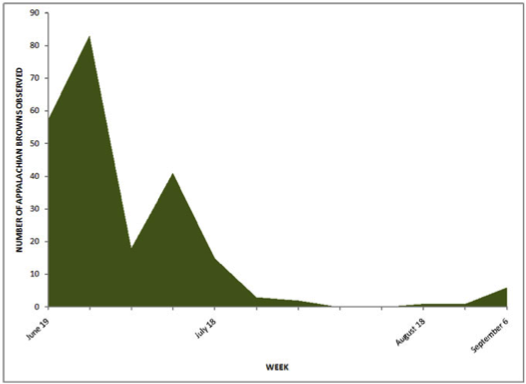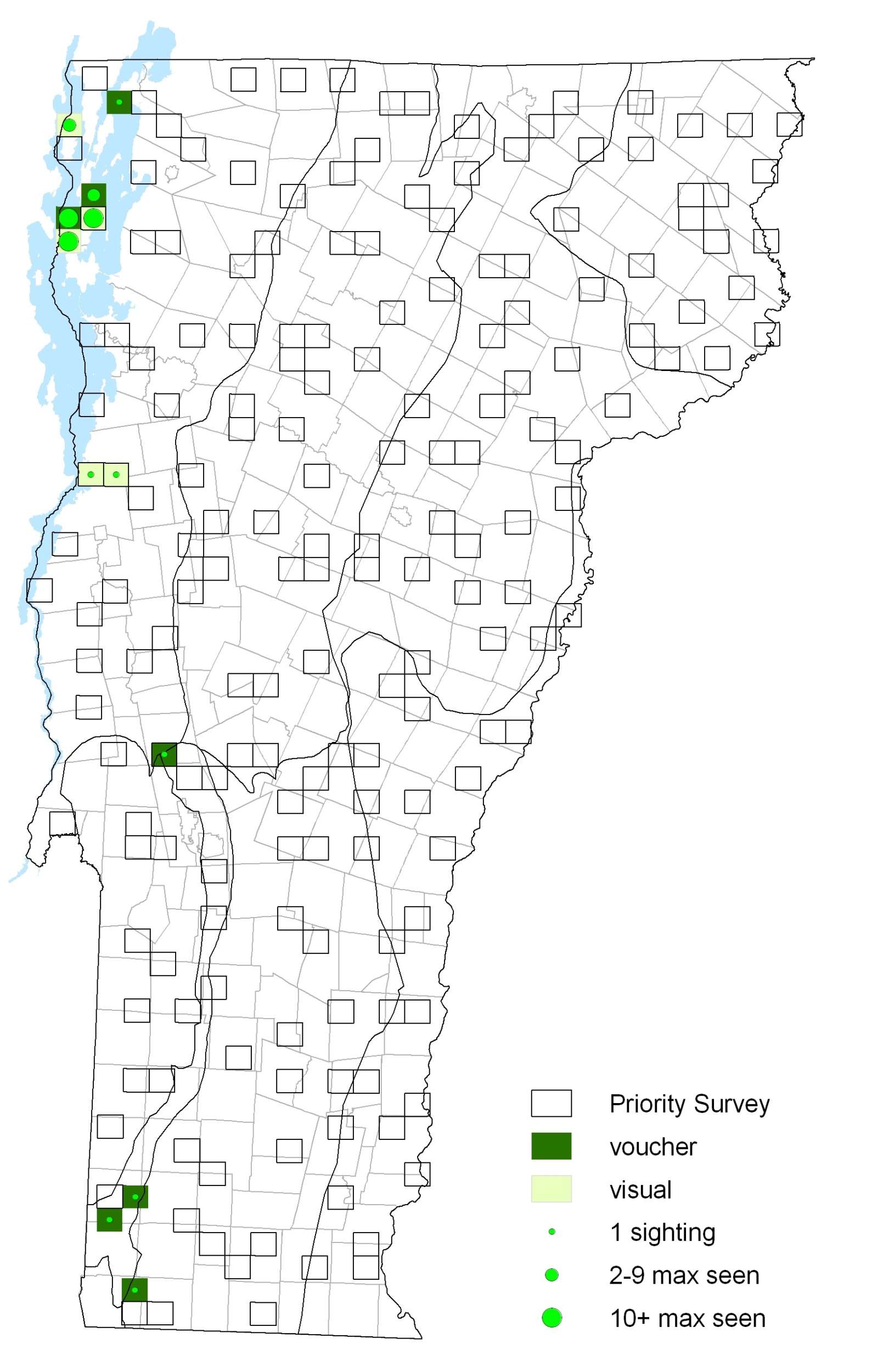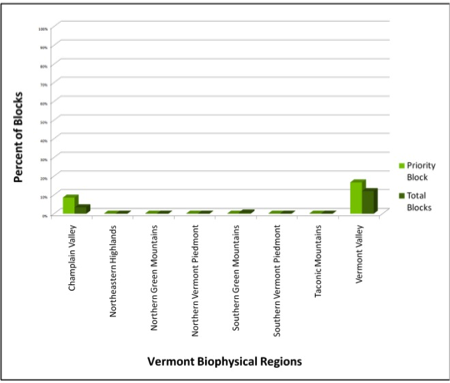|
Resident Conservation Status North American Range |
Both Eyed Brown and Appalachian Brown were considered to be the same species until 1970 when it was found that the two were actually sibling species. A butterfly of wooded wetlands. When given a choice, experimentally released individuals moved into riparian forest habitat and wetland habitat (Kuefler et al. 2010). In all cases where open-field habitat was a potential choice, released butterflies rejected it in favor of the other habitats. Males patrol for females and both perch sporadically during the day. Females lay eggs singly on or near the hostplants. Larvae feed on leaves at night and hide at the base of the plant during the day.
Identification
Nearly identical to the Eyed Brown. Wings are medium brown. Lower side of forewing with the two end eyespots larger than the middle two; spots may not touch. Dark line inside the hindwing row spot is sinuous, not zigzagged.
Flight
Others have reported two broods in southern range and one in north. During VBS there appeared to be two broods in Vermont, with the first from mid June to late July and a partial second brood in late August and early September. Extreme dates: 19 June 2007 and 7 September 2006 in Grand Isle (D. Hoag).
Distribution and Habitat
Found only in the Champlain and Vermont valleys during VBS, most commonly in Champlain islands and the southernmost Vermont Valley. Found in wooded and shrubby swamps, bogs, and other wetlands; also woodland openings and edges as well as fields and meadows adjacent to wetlands. Hostplants are sedges, especially Tussock Sedge (Carex stricta), but possibly other species such as C. gracillima, C. lacustris, C. languinosa and Rhynchospora inundata.







